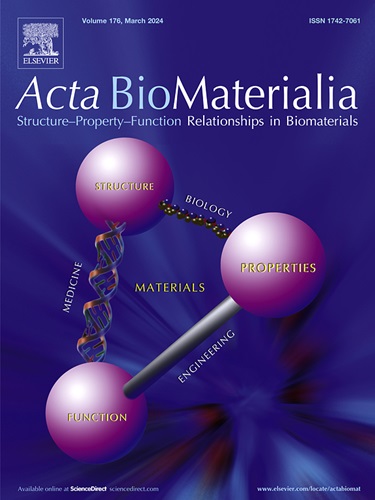Trends and considerations in annulus fibrosus in vitro model design
IF 9.4
1区 医学
Q1 ENGINEERING, BIOMEDICAL
引用次数: 0
Abstract
Annulus Fibrosus (AF) tissue integrity maintains intervertebral disc (IVD) structure, essential to spine mobility and shock absorption. However, this tissue, which confines nucleus pulposus (NP), has been poorly investigated, partially due to the lack of appropriate study models. This review provides a comprehensive analysis of AF in vitro models. By critically assessing the current AF in vitro models, this works thoroughly identifies key gaps in replicating the tissue's complex microenvironment. Finally, we outline the essential criteria for developing more accurate and reliable AF models, emphasizing the importance of biomaterial composition, architecture, and microenvironmental cues. By advancing in vitro models, we aim to deepen the understanding of AF failure mechanisms and support the development of novel therapeutic strategies for IVD herniation. Insights gained from this review may also have broader applications in regenerative medicine, particularly in the study and treatment of other connective tissue disorders.
Statement of significance
This review evaluates the current in vitro models of the annulus fibrosus (AF), a key component of the intervertebral disc (IVD). By identifying gaps in these models, particularly in replicating tissue's complex microenvironment, we propose essential criteria for the development of more accurate AF models, to better understand the pathomechanisms and potentially aid the development of therapeutic approaches for spinal disorders. The findings also extend to broader studies of musculoskeletal tissue disorders in the context of regenerative medicine, appealing to a diverse biomedical research readership.

纤维环体外模型设计的趋势和考虑因素。
本文章由计算机程序翻译,如有差异,请以英文原文为准。
求助全文
约1分钟内获得全文
求助全文
来源期刊

Acta Biomaterialia
工程技术-材料科学:生物材料
CiteScore
16.80
自引率
3.10%
发文量
776
审稿时长
30 days
期刊介绍:
Acta Biomaterialia is a monthly peer-reviewed scientific journal published by Elsevier. The journal was established in January 2005. The editor-in-chief is W.R. Wagner (University of Pittsburgh). The journal covers research in biomaterials science, including the interrelationship of biomaterial structure and function from macroscale to nanoscale. Topical coverage includes biomedical and biocompatible materials.
 求助内容:
求助内容: 应助结果提醒方式:
应助结果提醒方式:


